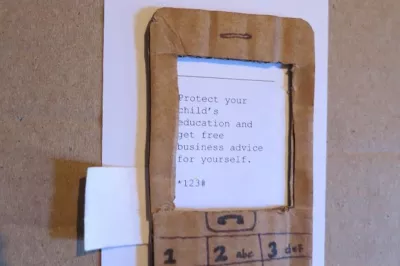Branchless Banking and Microinsurance: A Perfect Marriage?
In previous blogs Mark Pickens has lamented the lack of innovation by branchless banking providers in products that go beyond payments. But there are some green-shoots of innovation. In this blog we take a look at some examples of early experiments that we have seen involving in micro-insurance.
It could be argued that micro-insurance is the ideal financial product to be offered via branchless banking. Insurance requires a large base of customers: the larger the base, the more diversified the risk for the insurer, and the cheaper the insurer is able to offer the product. And branchless banking, we have long argued, is a business built on high volumes and low margins.
It seems that several others share this view. Here’s a quick summary of three of the most exciting examples that we have come across around the world that pair micro-insurance with branchless banking channels:
- In Ghana, mobile operator Tigo has partnered with MicroEnsure and Vanguard Life to offer "Family Care Insurance” to their customers based on their usage of airtime. Customers sign up for the service and nominate one other family member or loved one to be included on their policy. The amount of cover that they are entitled to ranges from GHC 200 – 1,000 (USD 130 – 650) and is based on the value of airtime that was purchased during the previous calendar month. If a customer buys less airtime the next month, the cover will be reduced. Customers don’t have to have a mobile money account to qualify and the value to Tigo comes from increased customer “stickiness”.
- In the Philippines, Globe experimented with a hospitalization assistance insurance product that was linked to their international remittance service. This is another bundled service where the recipient of an international remittance transfer that lands into a GCash account is automatically entitled to cash assistance for each day of hospitalization, up to a maximum of ten days, should he/she require medical treatment within the 30 days after receiving the remittance. Again the motivation was to increase the attractiveness of the GCash channel relative to its competitors and to win more business rather than making direct revenue from the sale of insurance.
- And of course, there is innovation in Kenya too where insurance company, UAP, has partnered with seed producers, and fertilizer and chemical manufacturers to offer Kilimo Salama, an index based weather insurance product, where premiums are collected and claims settled using M-Pesa. Farmers can chose to pay a 5% premium when they buy their inputs and if there is a drought or excessive rain during the growing season they automatically receives a payout to their M-Pesa account on their phone.
None of these services has yet reached any significant scale, but they are interesting examples of innovation and, we hope, only the first movers in a global market with huge potential.
- Chris Bold




Comments
Thank you Chris. Ghana’s is a
Thank you Chris. Ghana’s is a great innovation. I will be following it closely to get a clearer understanding of how the market takes it. What I am looking for is the approach to marketing as opposed to distribution as selling insurance generally requires a certain amount of interaction because of the legal and technical terms and implications particularly when you are targeting a population that has experienced exclusion.
Hi Paul,
Hi Paul,
You might like to also look at the product that MTN have launched in Ghana. MTN’s Mobile Money is the most established of the mobile banking products and premiums for their insurance product – offered in partnership with Hollard – are collected from the mobile wallet (unlike Tigo’s rival offering where the premiums are paid for by the mobile operator based on airtime useage).
Chris
Our organization is an
Our organization is an outreach and communications company developing innovative marketing, distribution and delivery channels for financial services that target the low income households.
We are presently rolling out a new micro insurance product for a leading insurance company in Kenya through an innovative model that creatively combines the concepts of network, viral and relationship marketing. This model attempts to exploit the permanent presence and relationships of a section of the target market to distribute the product and achieve effective penetration.
We will be using barber shops, salons, kiosks and small shops distributors and agents in urban as well as rural areas.
The product is designed around a savings plan and gives automatic life insurance and a disability cover to anyone able to save as little as $8.oo per month with the payments being made weekly.
We are interested to know if any members of the forum have experience in marketing insurance products to mass markets, particularly low income households.
The insurance company has partnered with the leading mobile company to collect premiums using MPESA, the preferred mobile money transfer but models for education and distribution need perfecting.
Are there any models that we can learn from?
Add new comment